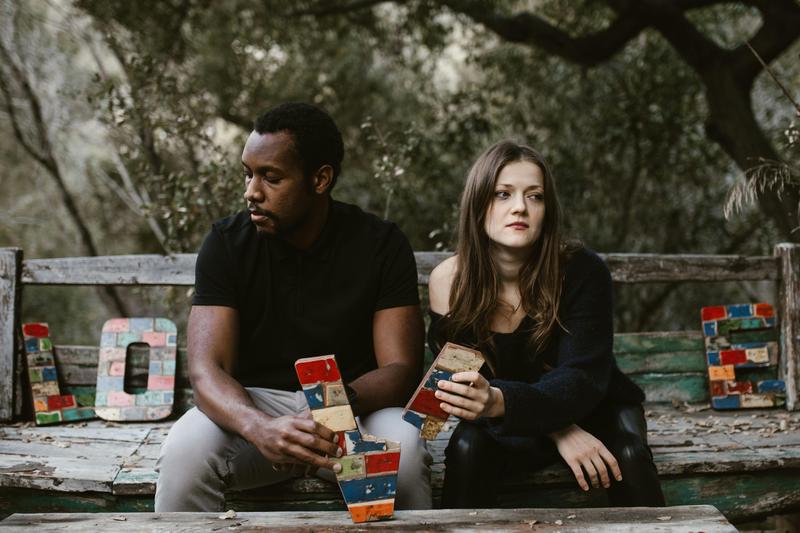The Hidden Purpose of Difficult Relationships
Have you ever found yourself wondering why the relationships that feel the most intense and meaningful can also be the most challenging? Why it seems like the people who touch your heart the deepest also bring up your deepest fears, insecurities, and doubts?
These relationships—whether romantic or not—seem to act like mirrors, reflecting back parts of ourselves we’d rather not see. But what if those challenges weren’t a sign of failure or incompatibility? What if they were invitations to grow?
I remember a client who kept attracting partners that left them feeling unseen and unworthy. They were frustrated, thinking they were just unlucky in love. When we explored the idea of relationships being mirrors, they started to recognize how their own fear of not being enough was shaping the dynamic.
That simple shift in awareness was life-changing, and they began approaching relationships with a whole new mindset.
Relationships as Mirrors for Growth
Have you noticed how certain relationships seem to amplify emotions in ways that feel almost overwhelming? The connection feels magnetic—like it’s pulling you closer to someone—but at the same time, it can surface insecurities, doubts, or even anger that you didn’t realize you were carrying.
These experiences can feel confusing, but they’re not random. They’re a mirror. When someone triggers you—whether it’s frustration, rejection, or even a fear of losing them—it’s rarely about the other person.
What’s really being reflected is an unresolved dynamic within yourself. That doesn’t mean the other person is blameless or perfect, but it does mean they’re holding up a mirror to help you see parts of yourself that you’ve avoided addressing.
Ask yourself: When you feel hurt or triggered, is it possible that the emotion is pointing you to a deeper truth about yourself? Maybe a fear of being unworthy of love, a tendency to seek validation from others, or an old wound that’s never fully healed.
What makes these moments powerful is that they bring awareness to the parts of us that need healing. If we choose to listen, the discomfort becomes a doorway—not to fixing the relationship but to better understanding ourselves.

The Illusion of Completion Through Others
A common story we tell ourselves is that relationships will “complete” us. You might feel that once you find the right partner or reconnect with someone deeply important, you’ll finally feel whole, secure, and happy. But relationships aren’t meant to fill the gaps in us. They reveal where those gaps exist.
Think about it: if you enter a relationship hoping for someone else to make you feel secure, any time they pull back or don’t meet your expectations, your sense of security collapses. It’s not because they failed you—it’s because the foundation wasn’t strong within you to begin with.
True harmony in relationships comes when both people approach each other from a place of inner wholeness. That doesn’t mean you need to be “perfect” or have everything figured out. It means being willing to look at the parts of you that crave validation or reassurance and learning to meet those needs for yourself.
This isn’t easy, but it’s incredibly freeing. It allows you to show up in relationships from a place of love and openness rather than fear or control.
The Role of Emotional Patterns
Every relationship you’ve ever had has been shaped, in part, by the emotional patterns you bring to it. Maybe you’ve noticed certain recurring themes—like feeling unappreciated, abandoned, or misunderstood. These aren’t just accidents. They’re deeply rooted patterns that come from the stories you’ve carried for years, often unconsciously.
For example, if you have a story that “people always leave,” you’ll likely interpret even the smallest signs of distance in a relationship as proof of that story. This can lead to actions—like pulling away or clinging too tightly—that actually reinforce the outcome you fear.
Breaking free from these patterns requires awareness. You can’t change what you’re not aware of. Start by asking yourself: What recurring feelings or dynamics show up in my relationships? Is there a story or belief underneath those experiences that might not be true?
When you start to question the stories, something powerful happens. You realize you’re not a victim of your emotions or circumstances—you’re the creator of them. And that means you have the power to create something different.
The Invitation to Inner Alignment
At the heart of every challenging relationship is an invitation: to align with your truest self. This alignment isn’t about becoming someone different; it’s about stripping away the layers of fear, self-doubt, and unmet expectations that keep you disconnected from the deeper part of you.
When you stop looking to others to fill your emotional needs, you create space for relationships to be what they’re meant to be—a place of connection, not completion. This shift doesn’t just improve your relationships; it transforms how you experience life.
Alignment happens when you recognize that the emotions and thoughts swirling inside you aren’t fixed—they’re trained. With practice, you can train yourself to shift from fear to love, from reactivity to calm, and from doubt to confidence.
This doesn’t mean you’ll never feel triggered or insecure, but it does mean you’ll learn to meet those emotions with curiosity instead of resistance.
Reflective Insight to Embody This Concept
The next time you feel triggered by someone, pause. Instead of focusing on what they did or didn’t do, ask yourself: “What part of me is being reflected here? What is this moment teaching me about where I still need to grow?”
This single practice can begin to transform the way you relate—not just to others, but to yourself. It shifts your focus from fixing the relationship to understanding the deeper dynamics within you.
If this resonates with you, you’ll find the Inner Foundation Series a powerful way to go deeper. It’s a structured process designed to help you train your mind and emotions, break free from the stories and patterns that hold you back, and align your inner world with the life and relationships you want to create.
Through guided meditations, reflection exercises, and practical tools, you’ll learn how to cultivate emotional resilience and uncover the clarity to create lasting transformation. Check it out if you’re ready to explore these concepts further.

